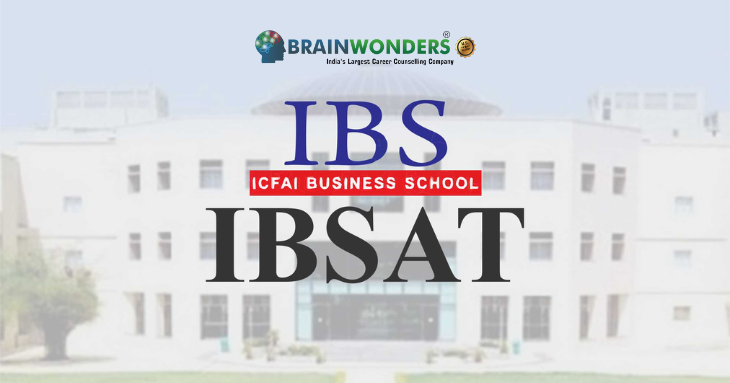

Take Brainwonders Career Test and make the right decisions for your college and course ahead
Let your unique personality, strengths, and traits guide to make the best decdision of your life!
Blog
16 February,2024 | By Brainwonders

Admission to the Diploma in Aeronautical Engineering is open to students keen on specializing in aircraft design and manufacturing. This course caters to those interested in aircraft design, manufacturing, servicing, and testing.
After completing their schooling, many students opt for diploma courses, and the Diploma in Aeronautical Engineering is also available for students who have completed their 12th grade.
For admission to this course, students must appear for the Aeronautical Engineering Common Entrance Test (AE-CET). Clearing this entrance exam paves the way for easy access to top institutes or colleges approved by AICTE offering the diploma course. The AE-CET is conducted annually in November, and aspiring students can register for the exam through the official website.
With a focus on aircraft design and manufacturing, the Diploma in Aeronautical Engineering provides a platform for aspiring professionals to enter the dynamic aviation industry and contribute to its growth and advancements.
The Diploma in Aeronautical Engineering is a 3-year program, divided into six semesters, designed to equip candidates with comprehensive knowledge in aircraft design, construction, maintenance, and planning. Approved by the All India Council for Technical Education (AICTE), this course covers various aspects of aeronautical engineering, including aircraft design, manufacturing, maintenance, testing, and rocket control.
To be eligible for the Diploma in Aeronautical Engineering, candidates must have completed their 10th standard from a recognized board with a minimum of 45% marks and Science as a core subject.
The IMTS Institute currently offers a part-time Diploma in Aeronautical Engineering for admission. Students aspiring to join this course should have passed the 10+2 level examination with a minimum score of 55%. This diploma program delves into various activities related to aeronautical engineering, encompassing the study, design, and manufacture of aircraft and flight-capable machines.
The institute selects candidates for admission based on comparing their previous qualifying exam scores with those of new applicants. To apply for admission, students must fill out the application form on the official website of the IMTS Institute.
In case of any issues during the application process, students can seek assistance by submitting their queries on the official query portal of the IMTS Institute. Educational counselors will promptly respond to the questions and provide the best solutions. Enrolling in the Diploma in Aeronautical Engineering offers a promising pathway into the dynamic and exciting field of aeronautics, providing opportunities for growth and contribution to aviation advancements.
The Diploma in Aeronautical Engineering is a three-year diploma-level course focusing on aircraft maintenance, production, and design. It offers a promising career path for those who aspire to work in the aviation industry and requires completion of the 12th class as an entry requirement. Throughout the course, students gain expertise in various aircraft-related technologies and study subjects such as aircraft structure, maintenance, aviation sector regulations, and more.
This course offers multiple opportunities and benefits to students seeking admission, some of which include:
The Diploma in Aeronautical Engineering is typically spread over six semesters, spanning three years. Students must achieve passing grades in each discipline they study during this time. If a student cannot attempt an exam during a particular semester, the university grants two additional opportunities to qualify for the exam. The maximum duration for completing the Diploma in Aeronautical Engineering course is six years.
The average annual cost of pursuing a Diploma in Aeronautical Engineering ranges from INR 12,500 to INR 25,789. However, the fee structure may vary depending on the institute offering the course.
The Diploma in Aeronautical Engineering syllabus covers diverse subjects, providing students with a comprehensive understanding of the field. Some of the critical issues include Aircraft Maintenance & Practice, Civil Aviation Regulation (CAR), Aircraft Instrumentation Systems, Avionics & Aircraft Radio Systems, Aircraft Structures, Aircraft Systems, Maintenance Management, and more. Practical labs and project work are integral to the syllabus, offering students valuable hands-on experience.
Upon completing the Diploma in Aeronautical Engineering, students have various career opportunities in design, maintenance, development, teaching, and managerial roles within the aviation industry. They can also choose to upgrade their qualifications for further career advancement. The course prepares students professionally and equips them with the necessary skills for a successful career.
Graduates of this course can explore various job profiles, such as Logistics Engineer, Airframe Design Engineer, Manufacturing Engineer, Integration Engineer, Quality Manager, and more. As beginners, they can expect a monthly salary of around 40,000 to 50,000 INR. Salary packages may vary based on company size, job role, and location.
Conclusion: The Diploma in Aeronautical Engineering imparts valuable skills in aircraft design, manufacturing, and testing, along with knowledge of operating aircraft and rockets. This course opens doors to numerous job opportunities and serves as a stepping stone towards a successful career in the aviation industry. By acquiring this diploma, students gain practical expertise and become qualified assistant aeronautical engineers, well-prepared to contribute to the field's advancements.
Q1. What is the Fees-Structure of a Diploma in Aeronautical Engineering?
Answer: The approximate Fees for the Diploma in Aeronautical Engineering course range from INR 12,500 to INR 25,789.
Q2. How Can I Pay Fees?
Answer: Students can pay fees using various methods such as Cash, Demand Draft, etc.
Q3. Can aeronautical engineers become pilots?
Answer: Aeronautical engineers can have an advantageous starting point if they wish to become pilots. However, they may need to complete additional steps to obtain a pilot's license, including flight training and acquiring the necessary certifications, as they might need direct access to cockpit computers.
Q4. How can students pay the course fees?
Answer: Students can choose from multiple payment options to cover the course fees, including Cash, Demand Draft, and other available methods.
Q5. Can I do Diploma in Aeronautical Engineering Admission after 12th?
Answer: Yes, students who have completed their 12th-class education can apply for admission to the Diploma in Aeronautical Engineering course. The duration of this diploma program is three years.
Q6. Can I do a diploma in Aeronautical Engineering after the 10th?
Answer: Certainly, after completing their 10th standard, students can pursue a diploma in Aeronautical Engineering.
Q7: Is there scope for a diploma in aeronautical engineering?
Answer: Yes, the Diploma in Aeronautical Engineering offers various job opportunities and the potential to pursue further degrees in the same field. It opens doors to diverse job profiles within the aviation industry.
Q8. What is the difference between Aeronautical Engineering and Aerospace Engineering?
Answer: A course in Aeronautical Engineering involves the study of designing, developing, and producing aircraft, along with testing them within the Earth's atmosphere. Aeronautical Engineers find employment opportunities in both national and international settings, within public and private airlines, as well as in manufacturing industries. Aerospace engineering, on the other hand, encompasses the design, testing, manufacturing, and construction of various aerospace vehicles, including aircraft, spacecraft, rockets, satellites, and space shuttles. This field is often colloquially referred to as Rocket Science Engineering.
Q9. What subjects are covered in a diploma in aeronautical engineering program?
Answer: A diploma program in aeronautical engineering typically includes courses covering subjects like aircraft design and maintenance, aerodynamics, aviation technology, aviation safety, propulsion systems, and materials used in aviation.
Q10. Is it necessary to have strong math and science skills for this program?
Answer: Yes, possessing a strong foundation in mathematics and science, especially physics, is crucial for success in a diploma in aeronautical engineering program. These subjects serve as the fundamental building blocks for understanding aeronautical engineering concepts.
Q11. Are there any entrance exams for admission into diploma in aeronautical engineering programs?
Answer: Admission requirements for a diploma in aeronautical engineering program vary among institutes. Some may conduct entrance exams, while others may consider admission based on scores from the 10th-grade board exams. It is important to review the specific admission criteria of the institute you are interested in.
Q12. Can I pursue further education such as a bachelors degree after completing a diploma in aeronautical engineering?
Answer: Yes, after completing a diploma in aeronautical engineering, you can pursue further education, such as a Bachelor of Engineering (B.E.) or Bachelor of Technology (B.Tech.) in Aeronautical Engineering or related fields to enhance your career prospects.
Take Brainwonders Career Test and make the right decisions for your college and course ahead



,_Syllabus,_Pattern,_Old_Question_Papers.png)

